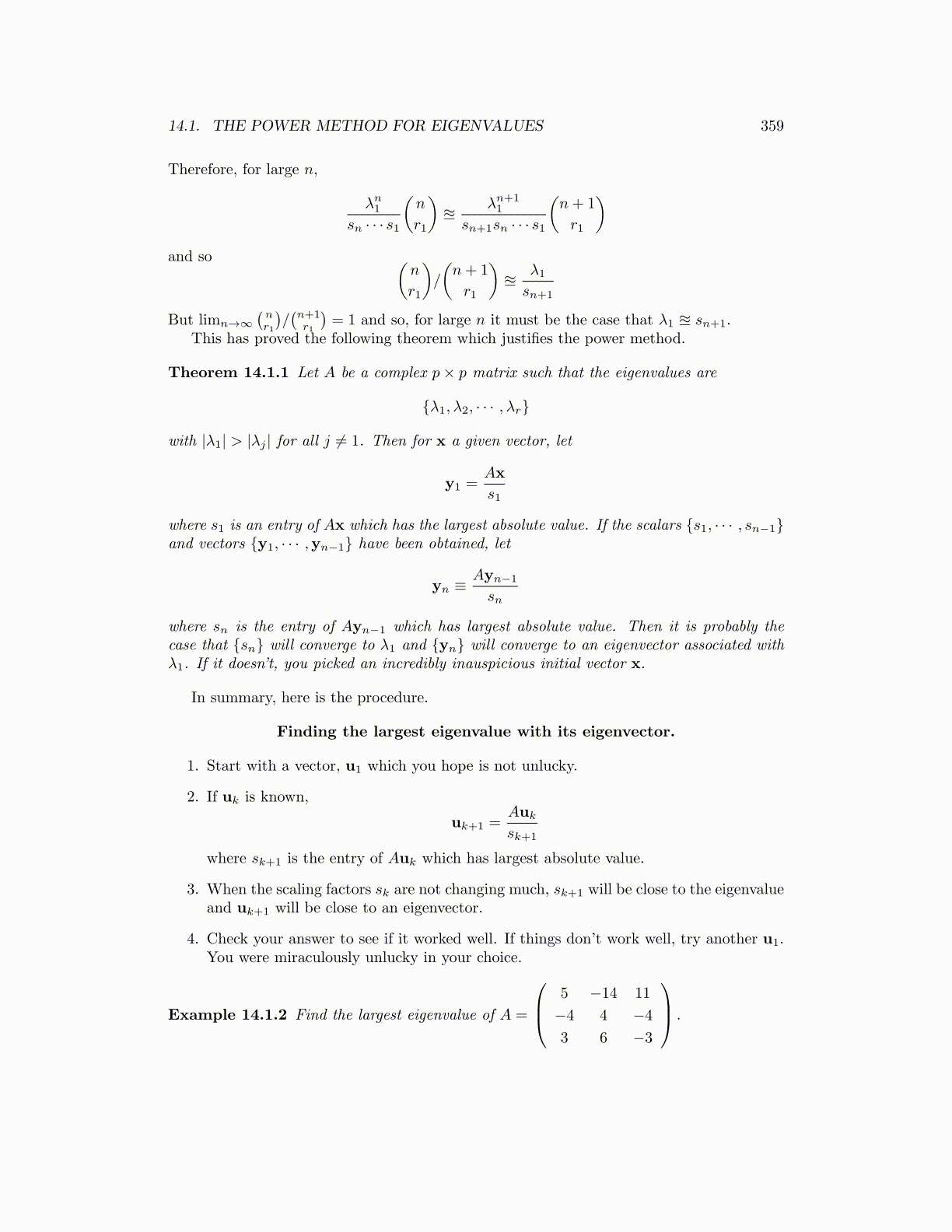
14.1. THE POWER METHOD FOR EIGENVALUES 359
Therefore, for large n,
λn1sn · · · s1
(n
r1
)≊
λn+11
sn+1sn · · · s1
(n+ 1
r1
)and so (
n
r1
)/
(n+ 1
r1
)≊
λ1sn+1
But limn→∞(nr1
)/(n+1r1
)= 1 and so, for large n it must be the case that λ1 ≊ sn+1.
This has proved the following theorem which justifies the power method.
Theorem 14.1.1 Let A be a complex p× p matrix such that the eigenvalues are
{λ1, λ2, · · · , λr}
with |λ1| > |λj | for all j ̸= 1. Then for x a given vector, let
y1 =Ax
s1
where s1 is an entry of Ax which has the largest absolute value. If the scalars {s1, · · · , sn−1}and vectors {y1, · · · ,yn−1} have been obtained, let
yn ≡ Ayn−1
sn
where sn is the entry of Ayn−1 which has largest absolute value. Then it is probably thecase that {sn} will converge to λ1 and {yn} will converge to an eigenvector associated withλ1. If it doesn’t, you picked an incredibly inauspicious initial vector x.
In summary, here is the procedure.
Finding the largest eigenvalue with its eigenvector.
1. Start with a vector, u1 which you hope is not unlucky.
2. If uk is known,
uk+1 =Auk
sk+1
where sk+1 is the entry of Auk which has largest absolute value.
3. When the scaling factors sk are not changing much, sk+1 will be close to the eigenvalueand uk+1 will be close to an eigenvector.
4. Check your answer to see if it worked well. If things don’t work well, try another u1.You were miraculously unlucky in your choice.
Example 14.1.2 Find the largest eigenvalue of A =
5 −14 11
−4 4 −4
3 6 −3
.